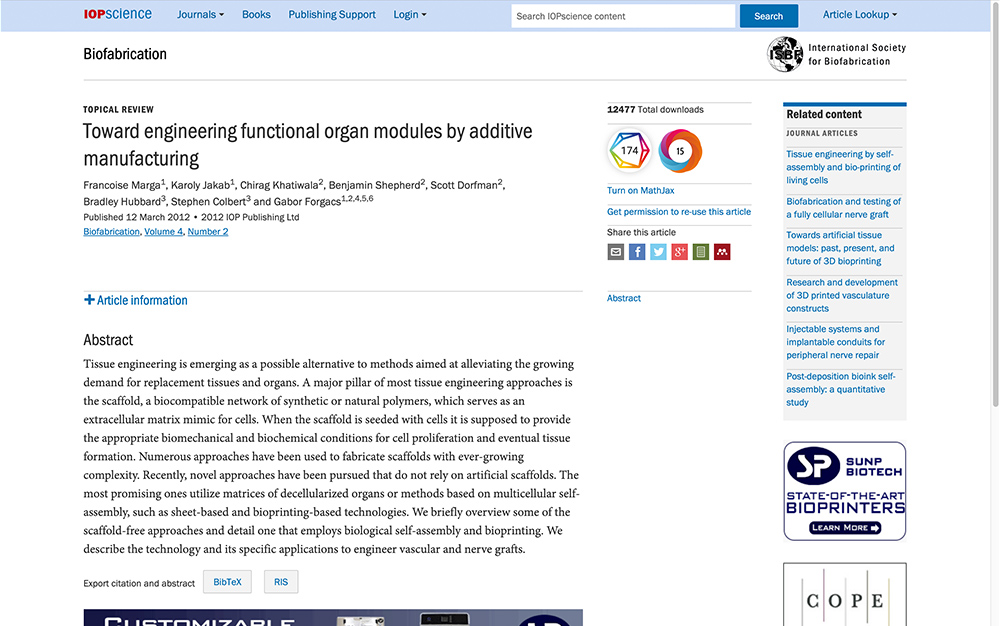Toward engineering functional organ modules by additive manufacturing
Publication Summary:
Tissue engineering is emerging as a possible alternative to methods aimed at alleviating the growing demand for replacement tissues and organs. A major pillar of most tissue engineering approaches is the scaffold, a biocompatible network of synthetic or natural polymers, which serves as an extracellular matrix mimic for cells. When the scaffold is seeded with cells it is supposed to provide the appropriate biomechanical and biochemical conditions for cell proliferation and eventual tissue formation. Numerous approaches have been used to fabricate scaffolds with ever-growing complexity. Recently, novel approaches have been pursued that do not rely on artificial scaffolds. The most promising ones utilize matrices of decellularized organs or methods based on multicellular self-assembly, such as sheet-based and bioprinting-based technologies. We briefly overview some of the scaffold-free approaches and detail one that employs biological self-assembly and bioprinting. We describe the technology and its specific applications to engineer vascular and nerve grafts.
View Publication
